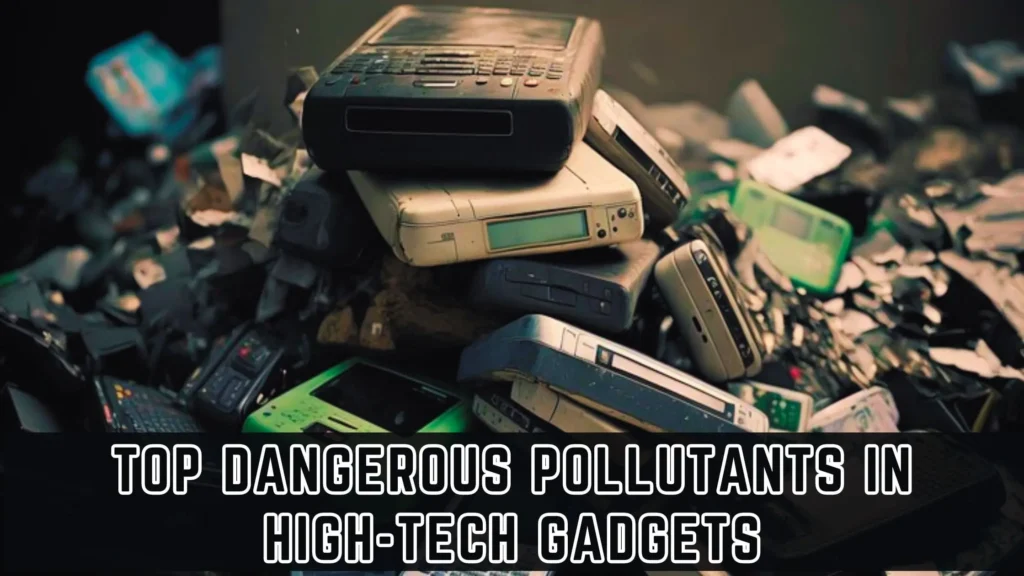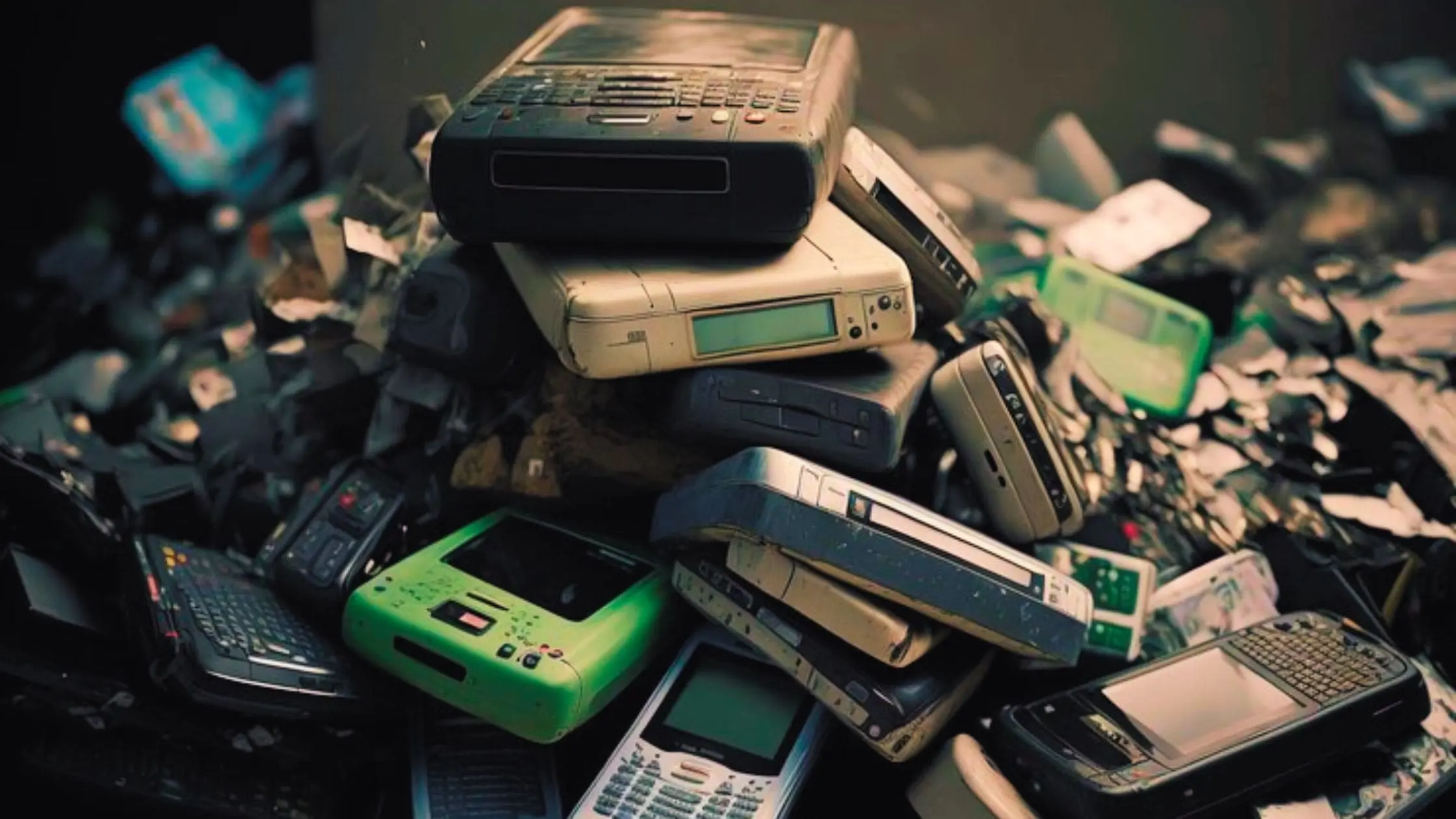Eyeing that new Apple Watch or Samsung New Suite of Smart Phones — who doesn’t?
But have you ever considered the environmental impact of having all these high-tech gadgets mass-manufactured?
I bet you didn’t, just like how I was a few years ago.
But when you have completed a degree, you, at the very least, start to think not just about the product at hand. You talk about what implications it will have, and whether it’s eco-friendly.
Who says all high-tech gadgets are eco-friendly? None.
Yes, while I do agree that high-tech gadgets like smartphones, laptops, and tablets have become ubiquitous in our lives, revolutionizing the way we communicate, work, and entertain ourselves.
However, amidst the convenience and innovation, there lies a hidden environmental cost: the proliferation of dangerous pollutants associated with these gadgets.
From the manufacturing process to their disposal, high-tech gadgets contribute to pollution in various forms, posing significant threats to both the environment and human health.
In this comprehensive guide, we’ll explore the top dangerous pollutants linked to high-tech gadgets, delve into the rules and regulations governing their disposal, and discuss sustainable solutions to mitigate their environmental impact.
Table of Contents
- 10 Dangerous Pollutants Associated With High-Tech Gadgets in Landfill Sites
- Rules and Regulations for E-Waste: Controlling Hazardous Pollutants Associated With High-Tech Gadgets
- Sustainable Solutions: Managing E-Waste and Dangerous Pollutants Associated With High-Tech Gadgets
- Beware! Dangerous Pollutants Associated With High-Tech Gadgets May Cost Us So Much.
10 Dangerous Pollutants Associated With High-Tech Gadgets in Landfill Sites
1. Lead
The leading pollutant in high-tech gadgets, Lead is a highly toxic heavy metal commonly used in soldering electronic components.
When high-tech gadgets reach the end of their lifecycle and are improperly disposed of, lead can leach into the soil and water, contaminating the environment and posing serious health risks to humans and wildlife.
2. Mercury
Mercury is another hazardous substance found in high-tech gadgets, particularly in fluorescent lamps, switches, and batteries.
Improper disposal of these gadgets can result in mercury leaching into the environment, leading to pollution of water sources and bioaccumulation in aquatic organisms, ultimately posing risks to human health.
3. Cadmium
Cadmium, commonly present in rechargeable batteries, is known for its carcinogenic properties. When electronic gadgets containing cadmium are discarded in landfills, the metal can seep into the soil and groundwater, posing long-term health hazards to ecosystems and communities.
4. Brominated Flame Retardants
Brominated flame retardants are chemicals added to electronic devices to reduce the risk of fire. However, these compounds are persistent organic pollutants that can accumulate in the environment and pose risks to human health, including developmental and reproductive disorders.
5. Polyvinyl Chloride (PVC)
PVC is a plastic commonly used in electronic gadgets for insulation and casing. When PVC-containing devices are incinerated or disposed of in landfills, they release toxic chemicals such as dioxins and furans, which are harmful to both human health and the environment.
6. Arsenic
Arsenic, a naturally occurring element, is often used in semiconductor manufacturing processes. Improper disposal of electronic gadgets containing arsenic can lead to contamination of soil and groundwater, posing significant health risks, including cancer and skin lesions.
7. Phthalates
Phthalates are plasticizers added to electronic devices to improve flexibility and durability.
However, these chemicals are known endocrine disruptors and can leach into the environment, affecting hormone balance in humans and wildlife and potentially leading to reproductive and developmental abnormalities.
8. Polybrominated Diphenyl Ethers (PBDEs)
PBDEs are flame retardants commonly found in electronic gadgets, particularly in circuit boards and plastic casings. These chemicals are persistent in the environment and can bioaccumulate in organisms, posing risks to ecosystems and human health, including neurodevelopmental disorders.
9. Perfluorinated Compounds (PFCs)
PFCs are used in the manufacturing of electronic devices for their water and stain-resistant properties. However, these compounds are highly persistent and can accumulate in the environment, posing risks to human health, including liver damage and immune system disruption.
10. Chromium
Chromium is often used in the manufacturing of electronic gadgets, particularly in metal plating and surface finishing. Improper disposal of these gadgets can lead to chromium contamination of soil and water, posing risks to human health, including respiratory issues and cancer.
Rules and Regulations for E-Waste: Controlling Hazardous Pollutants Associated With High-Tech Gadgets

To address the environmental impact of high-tech gadgets, various rules and regulations have been implemented worldwide.
These include:
Extended Producer Responsibility (EPR)
- Manufacturers are held accountable for the environmental impact of their products throughout their lifecycle, including disposal and recycling.
Waste Electrical and Electronic Equipment (WEEE) Directive
- This EU directive aims to reduce the environmental impact of electronic waste by promoting recycling and proper disposal of high-tech gadgets.
Restriction of Hazardous Substances (RoHS) Directive
- The RoHS directive restricts the use of certain hazardous substances, including lead, mercury, and cadmium, in electronic devices sold in the EU market.
E-Waste Recycling Programs
- Many countries have established e-waste recycling programs to encourage proper disposal and recycling of electronic gadgets, reducing their environmental impact.
Sustainable Solutions: Managing E-Waste and Dangerous Pollutants Associated With High-Tech Gadgets
To address the environmental impact of high-tech gadgets and mitigate the release of dangerous pollutants, several sustainable solutions can be adopted.
Reduce, Reuse, Recycle
- Encourage consumers to minimize electronic waste by reducing consumption, reusing devices whenever possible, and recycling old gadgets through certified e-waste recycling programs.
Product Design Innovation
- Promote eco-design principles in electronic product manufacturing, focusing on the use of environmentally friendly materials, modular designs for easy repair and upgrade, and energy efficiency.
Education and Awareness
- Raise awareness among consumers about the environmental impact of electronic gadgets and the importance of responsible disposal and recycling practices.
Research and Development
- Invest in research and development to develop cleaner production methods, alternative materials, and sustainable technologies for electronic devices.
Beware! Dangerous Pollutants Associated With High-Tech Gadgets May Cost Us So Much.
High-tech gadgets have undoubtedly improved our lives, but their environmental impact cannot be overlooked.
By understanding the top dangerous pollutants associated with high-tech gadgets, adhering to rules and regulations, and embracing sustainable solutions like the green tech solutions, we can minimize their negative impact on the environment and move towards a greener, more sustainable future.
Loving the content already? How about staying tuned to Tech Trend Tomorrow for more insights into tech trend.

